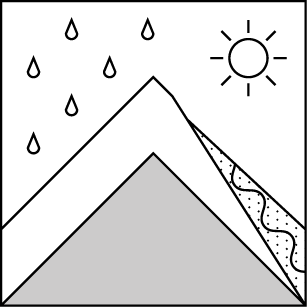Basic Information
Observation Details
Observation Date:
March 5, 2021Submitted:
March 5, 2021Observer:
SAC - Chris & Sara LundyZone or Region:
Banner SummitLocation:
Blue Bunch Mtn (6400-8400', primarily solar slopes but poked onto shadys at 8400')Signs of Unstable Snow
Recent Avalanches?
YesCracking?
None ExperiencedCollapsing?
None ExperiencedSnow Stability
Stability Rating:
GoodConfidence in Rating:
HighStability Trend:
ImprovingBottom Line
Observation objectives included looking at the weak layers in the top 3-4' of the snowpack and assessing wet snow problems. We found these layers on both sunny and shady slopes, but they were unreactive during tests. Not surprisingly, the snow on steep, sunny slopes became quite wet in the afternoon - especially down low.
Advanced Information
Weather Summary
Cloud Cover:
Mostly SunnyTemperature:
warmWind:
Moderate , SETemps were quite warm, especially down low. Moderate SE winds kept things cooler up high.
Avalanche Observations
| # | Date | Location | Size | Type | Bed Sfc | Depth | Trigger | Photos | Details |
|---|---|---|---|---|---|---|---|---|---|
| 1 |
Mar 1, 2021 (+/- 3 days) |
Fir Creek NE 8700ft |
D2 | N-Natural |

|
Report |
A number of wet loose slides have occurred in the past few days, all less than D2 and limited to very steep, sunny, rocky slopes.
Snowpack Observations
Where the snowpack is deeper at middle and upper elevations, the solars in this zone are managing the warming trend relatively well. A shallower/weaker snowpack (less than 1m in places) exists on some steep, low elevation, solar slopes and these were isothermal in the afternoon. Snow on north aspects stayed cold at all elevations.
HS ranged from 115cm in the flats at 6400' to 220-240cm on shadys at 8400'. Maybe a bit less depth than on Copper.
@8300', S, 13*: HS 160cm. 2/11 down 60cm presented as a thin layer of FC, there was a hint of a crust but the slope angle may have been a little too low. ECTX even with very hard loading, blocked sheared on the layer after getting pried out of pit. Snow was 1F just subsurface quickly becoming P to P+.
@8360', N, 30*: HS 240cm. 1/27 SH down 100cm, layer still subtly visible in pit wall. ECTX even with very hard loading, blocked sheared on the layer after getting pried out of pit (see photo). Decent crop of 5-8mm SH and some FC on the surface at his location.

Avalanche Problems
| Problem | Location | Distribution | Sensitivity | Size | Comments |
|---|---|---|---|---|---|
 Persistent Slab
Persistent Slab
|
|
Layer Depth/Date: 60-100cm, 1/27 & 2/11 Weak Layer(s): Jan 27, 2021 (FCsf) Comments: Rose indicates observed terrain. |
|||
 Wet Loose
Wet Loose
|
|
Comments: Problem most common on steep, rocky solars. Location rose indicates presumed problem location. |
